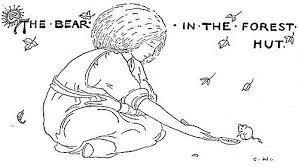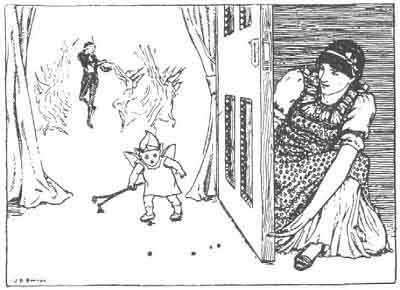#Finn MacCool
Text

Fionn mac Cumhaill aka Finn McCool
Because who doesn't love a legendary hero with a magic thumb
#fionn mac cumhaill#finn mccool#finn maccool#irish mythology#irish legends#celtic mythology#celtic#celtic legends#character design#art#illustration#character art
280 notes
·
View notes
Text

Fionn mac Cumhaill, pronounced Finn Macool, is an Irish folk hero. He became the leader of a warrior band called the Fiana after both defeating its leader and killing a fire spirit with his sword Mac an Luin. He accidentally gained the ability to tap into universal knowledge by sucking his thumb after being burnt by the fish of knowledge. Fionn met his future wife in the form of a deer, noticing that his dogs acted weird around the deer, Fionn was intrigued, bringing the deer back to his home. As soon as they stepped foot onto his land the deer transformed into a woman with Fionn falling in love with her, she confided that an evil Druid transformed her into her deer form. However one day when he was out hunting she was taken once more by the evil druid, never being seen again. When Fionn went out looking for her, he found a young fawn that once again piqued his interest, bringing it back to his home it transformed into a young boy, his son. Fionn isn’t believed to be dead, on the contrary it’s said that he’s in a deep slumber, and once Ireland is threatened he will emerge once more to defend his people.
Fionn’s name come from his light hair, Fionn meaning fair hair. Fionn mac Cumhaill is one of the most prolific and popular culture heroes from Ireland along with Cú chulainn and Lugh. According to some traditions, Fionn is the great grandson of Nuada, the god of hunting. Fionn’s genealogy doesn’t end there as he’s also commonly depicted as the descendant of the Firbolg warriors who fought the Tuatha dé Dannan.
#art#character design#mythology#ireland#irish mythology#celtic mythology#fionn mac cumhaill#finn maccool#culture hero#Fiana
8 notes
·
View notes
Text

Finn MacCool! Jameson Black Barrel, Irish Breakfast Tea, Lemon Bitters, Angostura Bitters, & Lemon Twist. Most delicious!
28 notes
·
View notes
Note
OMG you are in folk fairytales and legend Please can you tell me some of the cuteer ones you found even better if involving bears ? I loved interact with your OC too thanks fir joining and pls relax too from time to time and do not rush in answering me either 🙏🙏 I wish you a wonderful day 🤗🤗😘😘
Yesssss, I love them! Since a very young age I have been an avid reader/student of folklore, fairy tales, myths, and legends.
Below I talk more about my personal history/feelings on the topic, and end with my three favorite fairy tales. I hope they are “cute” enough for you!
But first I wanted to answer your question about stories featuring bears.
I tried to think of one in my memory where a bear played a prominent part, but turned up empty. I mean, yes, there is the standard “Goldilocks and the Three Bears”, but I assumed you wanted to hear about something off the beaten path.
So I dug around and found this one for you:
"The Bear in the Forest Hut".

It is a Slavic folk tale about a prince who was cursed to take the shape of a bear, and the brave and kind woman who helped him out of that curse. She had the typical misfortune to have a stupid father and an ‘evil stepmother’ who tries to stop anything good from happening to the heroine.
I liked this one because there is plenty of detail about the trials and tests the girl goes through in order to earn the bear’s trust and break his curse. Even more unique is how the story doesn’t just end right when the curse is broken (like so many folk tales). Instead, it goes on at length about how the two get married, travel over his kingdom, and what happens to the stepmother and stepsister.
@queengiuliettafirstlady What are some of your favorite fairy tales and myths?
How did I come to love fairy tales so much?
I think I can trace it back to my godmother, who was an amazing storyteller. She was Irish, so most of the tales she told me came from the British Isles and dated back to the 12th Century or earlier. The stories I most vividly remember her telling me were about the 3rd Century charismatic (but slightly foolish) folk hero Finn MacCool (or Fionn mac Cumhaill) and his very very clever wife Sadhbh.
As I entered my preteen years (1990s, pre-internet era) a library was built within a 15 minute drive from our rural town. I had never had such a frequent exposure to books before that, except our small school library. My mom would take me to the new public library often and I devoured every book they had on fairy tales and legends.
When I started college, the trend of turning ancient folktales into modern, dark retelling had begun to rise in popularity. Not only was my backpack full of those every week, but now I also had access to scholarly papers through our inter-collegiate online system! I could read published research on people all over the world, those who retraced Charles Perrault’s steps, or compared similar narratives, or discovered a new translation of an old work. It was also during my college years that I discovered The Aaarne-Thompson-Uther index, which categorizes the plots and themes of fairy tales.
When I learned about Perrault and the ATU Index, it changed my self-image.
Of course kids like fairy tales, but we are expected to grow out of those stories as we mature. I still had a deep love of folklore and myths well into my 20s and that made me feel a little silly and childish. But when I discovered that Charles Perreault (a historian in the 17th Century) believed the stories being shared in the oral tradition were important enough to be written down for posterity, that boosted my spirits. And when I stumbled across the ATU Index (begun in 1910, and continues to be updated annually still to this day), which took fairy tales seriously as anthropological artifacts, I was vindicated even more.
These historical efforts were proof that folk lore, legends, and fairy tales weren't just for children.
This short article is a MUST-READ for anyone who wants to have their love for storytelling rekindled and get pumped up to talk about fairy tales. It’s all about hope and courage. I especially appreciated the excerpt from Katherine Rundell when she talks about “the hope that is sharper than teeth”
As I studied more and more obscure stories from around the world, I soon had a list of my top 4 favorites that I came back to:
Katie Crackernuts
The Twelve Dancing Princesses
Beauty and the Beast
The Myth of the Selkie
The middle two I have owned a few printed copies of. They are quite common and have many retellings/variations. But Katie Crackernuts was a story I could only read online; I had never seen it in print.
There are actually similarities between parts of all three stories, which is probably why I love them so much.
I know you asked for ‘cute’ ones, but I don’t know if these really are that adorable. They all have happy endings for the heroines. Does that count? LOL

Katie Crackernuts (collected by Andrew Lange, first printed 1889)
This is a Scottish story about two sisters, one plain but clever (Katie) and one beautiful but simple (Anne). Despite this difference, they loved and supported one another as much as two sisters could. Through no fault of her own, Anne was cursed (you guessed it, by an evil stepmother) with the head of a sheep (or sometimes a donkey or goat, depending on the version) because the stepmother was jealous of her beauty. Katie put a hood over Anne to disguise her and left the house together, never to return.
They eventually came to the kingdom where there was a sick prince. His parents offered rich rewards for anyone who could heal his mysterious disease. Katie knew there had to be a reason normal medicine wasn’t working. She thought perhaps he was under a curse, too. Yep, he was going out at night in a trance to go under a hill to dance with fairies. So she watched and listened and investigated until she discovered the cure and how to administer it. Turns out the way to lift her sister’s curse was under that hill, as well!
She out-smarted the fairies, collected the items from them, and followed the instructions precisely. He grew well and discovered he loved her during all their time together while she was patiently investigating. When she used the cure on her sister, Anne’s sheep head turned back into a human one and the prince’s brother fell in love with her on the spot (of course he did). It was a lovely double-wedding.
The Twelve Dancing Princesses (collected by the Brothers Grimm, first printed 1812)
This is about twelve sisters who are constantly tired and ruining their expensive shoes every night, and no one can find out why. The king has offered rich rewards and even marriage to the most beautiful of his daughters, but any man who steps up to the challenge either dies, fails the task, or is never seen again. Until one clever man (who has been watching this happen over and over) decides to try solving the mystery. The eldest sister (the most intelligent and haughty of the siblings) tries to stop him each time, but he outsmarts her as he follows the princesses into a fairy forest where they dance all night until their shoes fall apart and they drop from exhaustion.
Just like Katie in the story before, he is observant and waits until he has all the information and proof he needs to confront the princesses. He convinces the king, who is angry that his daughters were escaping every night. The man explains they were under a spell that compelled them to sneak out. The king offers him the most beautiful daughter (who is also the youngest and the most silly), but the man opts to marry the eldest because she was the only one who came close to matching wits.
Katie Crackernuts has much in common with The Twelve Dancing Princesses.
Both have very strict rules for entering into the world of fairies, and the “wasting sickness” that comes upon a human who spends too much time in that world (which is also a metaphor for other maladies that were rampant during those centuries, such as tuberculosis). I enjoy that theme of “Good luck if you’re beautiful because your looks won’t save you. You need to be wise, patient, and clever in this world.”
Beauty and the Beast
This was one of my favorites long before Disney made their movie. Almost everyone knows how the story goes, so I won’t make this long post even longer by summarizing it here. The bravery and selflessness of the heroine was very inspiring to me, and I loved the idea of being surrounded by talking furniture and not a single human! I was a very introverted kid. And I guess I loved the idea of a sad prince in an unloveable disguise who needed to feel loved.
Another thing I think is neat about that story is there is an actual author: Gabrielle-Suzanne de Villeneuve, published the story in 1740. Most folklore and fairy tales have a shared origin and no single creator. Not so for Beauty and the Beast. This one has a bonafide author, which makes it unique. Not only that, but the author was a woman!
What Beauty and the Beast has in common with Katie Crackernuts is charity, mercy, humility, and selflessness.
The heroine not only saves herself, but she saves those who are entrusted to her. Who needs a prince, right?? Katie didn’t have to leave home to take care of her cursed sister, but she did. She didn’t have to agree to help the sick prince, but she did. Belle didn’t have to sacrifice herself in her father’s place in that unreasonable pact, but she did. She could have been disagreeable, rude, and throwing herself a pity party the entire time she was captive in the Beast’s castle, but instead she did her best to keep her spirits up and not hate her captor. (Readers: don’t come at me with the whole “Stockholm Syndrome” comment trying to be witty; it’s an old joke that was never funny in the first place.) Katie also tried hard to make the best of an awful situation, and she was never resentful to Anne or put her on a guilt trip. I was inspired by the important values and virtues portrayed by these two heroines.
The Legend of the Selkie
You asked for ‘cute’ stories, but this last one is anything but cute. The Celtic legend of the Selkie is heartbreaking, and there is hardly ever a happy ending. I heard briefly about it as a kid, but never found a published story to read. The oral tradition of the tale goes back to the 13th Century, but it didn’t make it into many books. Then the movie The Secret of Roan Inish came out in 1995. I was 15 at the time and didn’t have my driver’s license yet, so I begged a family member to bring me to the only theater in the entire state that was showing this independent film, over an hour away. It was magical. I bought the DVD as soon as it was available. It was the only thing I could find at that time (remember, the internet wasn’t really used for entertainment in 1995 like it is now) that displayed the Selkie myth, which is:
There are some special seals in the sea who can shed their seal-skin and turn themselves into human women. They are beautiful, quiet, and hard-working. And therefore they are much sought-after as wives by the lonely fishermen of the islands. The legend says that if you find a Selkie in her human form and take her seal-skin away from her, she is yours for the rest of your life. You can imagine the life of servitude that awaits the poor woman! She is usually desperate to turn the house inside out looking for her seal skin and return to the sea, or if she doesn’t find it she will murder her husband.
Fascinating!
Oof, okay. That post went on really long. Sorry. When I start to talk about fairy tales and folklore, I have a difficult time keeping it short, lol. And I didn't even get into the Greek myths! Yikes.
#fairy tales#storytelling#folklore#legends#myths#folktales#Katie Crackernuts#Kate Crackernuts#Selkie#Beauty and the Beast#The Twelve Dancing Princesses#Twelve Dancing Princesses#The Bear in the Forest Hut#Irish legend#Slavic stories#Finn MacCool#Fionn mac Cumhaill#Charles Perrault#Aaarne-Thompson-Uther index#ATU Index#Andrew Lange#Brothers Grimm#Grimms Fairy Tales#Gabrielle-Suzanne de Villeneuve#my asks#Celtic folklore
4 notes
·
View notes
Text
So Saba remained in the Dun of Almu. And Finn grew to love her, until the day came when he asked her to drink the bride-cup with him. And he did not ask lightly, for well he knew the sorrows and hazards that might be in store for a mortal man who takes a bride from the Fairy Kind.
- The High Deeds of Finn MacCool, Rosemary Sutcliff
oh great, now I have an annoying little Finrod voice in the back of my head harping on about Higher Purposes of Doom. :[
#books what I'm reading#The High Deeds of Finn MacCool#Rosemary Sutcliff#with a dose of#Athrabeth#for real though#I love the story of Finn and Sadb#for me it was always the sweetest and saddest of the love stories in Irish myth
12 notes
·
View notes
Photo










Food I Ate This Month Part 1~~ :D
3 notes
·
View notes
Text
Shadow and seer-Fionn-Elriel
Hofas spoilers
This is just a speculation but in hofas Silene gave this information.
My mother eventually trusted only Helena and myself to seek the truth. She knew we could be of great use to her, because we bore the shadows as well as starlight.
Helena and Silene both have shadow and starlight power.
Theia= starborn
So they got the starlight power from Theia. They must have gotten their shadow power from Fionn then? Bc he is their father.
So this made me think...in mythology fionn is a seer.
Fionn mac Cumhaill often anglicized Finn McCool or MacCool, is a hero in Irish mythology, as well as in later Scottish and Manx folklore. He is the leader of the Fianna bands of young roving hunter-warriors, as well as being a seer and poet. He is said to have a magic thumb that bestows him with great wisdom. He is often depicted hunting with his hounds Bran and Sceólang, and fighting with his spear and sword. The tales of Fionn and his fiann form the Fianna Cycle or Fenian Cycle (an Fhiannaíocht), much of it narrated by Fionn's son, the poet Oisín.
So what if...fionn in acotar was also a seer? What if that's how elain and azriel are also connected?
Bc that would mean...
Fionn: a seer and shadow powers
Elain: a seer
Azriel: shadowsinger
Is that how they are connected? Is that how elain could use the tt? 👀👀
Bc we know tt and gwydion are twin to each other. And Gwydion was Fionn's sword. Tt was his friend's—Enalius.
And in acowar elain used tt. Maybe bc that's the reason why. Maybe being a seer has some kind of connection to it. Just like being a starborn is connected to wielding the gwydion and its powers.
But as a black blade broke through the king’s throat, spraying blood, I realized someone else had. Elain stepped out of a shadow behind him, and rammed Truth-Teller to the hilt through the back of the king’s neck as she snarled in his ear, “Don’t you touch my sister.”
And we know from Bryce that knife has some kind of shadow powers.
Bryce threw her power into the Starsword, light ripping through the black blade, willing it to tear this fucking monster apart—She willed it into Truth-Teller, and shadows flowed—
So that's all.
82 notes
·
View notes
Text
"I can navigate around this landslide and get back to the trail no problem" this is the devil talking. Do not do this. Clearly I did get back to the trail because I am posting and not lying at the bottom of the ravine but it was a feat only accomplished through a Finn MacCool style miracle where I suddenly understood topographical maps and then an andrenalin-fueled scaling of the mountainside through so many many briars. I am chagrinned + humbled. Nickels and the Larabar of Wisdom.
2 notes
·
View notes
Text
My first ever Tales of Arcadia OC
I’ve got my ideas for an OC for a fanfic that I am currently working on. So I decided to just put it out there.
The name of my OC is Duncan Finlay, a Scottish-American boy, attending Arcadia Oaks High as a senior at the age of 18. Oh, and he’s also going to be the Trollhunter, mainly because it will make things easier for me for what I am going to do to him. (see my reimagining for the Triumbric stones and the Eclipse armor to get an idea) (also, I think he might have become a self-insert so… suffer, bitch! suffer!! (no shade at others who make self-inserts, I'm fine with that.))
I took some inspiration from Macbeth from the play by Shakespeare and the real-life King Duncan, along with Fionn Mac Cumhaill(pronounced Finn MacCool) for Duncan’s character. Speaking of which, I got the idea for Duncan’s name from the real-life King Duncan I. He was the king before Macbeth and wasn't the best king as he was young, weak, and not great at leading. His titles was “the sick” or “the diseased” and that instantly sold me on naming my OC: Duncan because of what I have in store for him.
Because I can’t art (or at least, art without it making me cringe (and if it makes me cringe, I don’t want anyone else to look at it )) here’s a description of him. Duncan has straight blonde hair that’s a bit messy and short at the back than it is at the front. He has a stubble on his chin, trying to grow a goatee that would cover his chin. His eyes are grey and has a pale skin color. He stands at about 5'11'' to 6 feet tall and is mostly slim yet has some muscle on him, but not much for you to think he’s got any abs. Usually, he wears a whitish-grey t-shirt with black pants that have a thick white line on each side.
Now, let me tell you about his troll form(half-troll if you wanna get technical). The colors of his body is similar to labradorite as that is what I believe the Daylight Stone is based on because, in the metaphysical world, it is said to be one of the most powerful protectors (put a pin in that) (firemountaingems.com/resources/encyclobeadia/gem-notes/gmstnprprtslbrd) and it’s a stone of magic and mystery and it is said to be a stone of change (friendsnyc.com/blogs/news/witchy-ways-labradorite-crystal-meaning-uses).
As a troll, he’s about 8 feet tall, his skin is predominantly blue (with some other colors here and there) and his hair becomes white. Side note, his hair being blonde as a human and it being white as a troll is a reference to Fionn Mac Cumhaill (a great warrior in irish myth) where Fionn means white or light-hued and is usually what you refer to someone who has blonde hair, and how some myths believed he got this name because his hair was turning prematurely white. As a troll, his hair becomes softer, he grows some sideburns and a full goatee. He grows more hair on the back of his neck, connected to a large spot of hair on the top part of his back that slims down as you go down his back and some hair on his shoulders, along with some chest hair that extends down his stomach. He’s also got a thick line of hair on the side of the forearm that starts below the elbow and ends above the wrist. His horns start at the top part of his forehead and curve back into a crescent shape. The color of his horns are a dusty grey and the tips start to become a pale green. Duncan has carvings on his troll body. However, normally, carvings on a troll’s body have a darker, faded color of their stone-skin; Duncan’s carvings are black that can glow bright blue. He also has a black spot in the shape of the Eye of Gunmar at the area of his right eye, which only the outline of it can glow. As of right now, I don’t have a reference to what his markings look like but I’ll work on it.
Before he became the Trollhunter, there was nothing much to say about Duncan, he was a good guy who likes to go on for walks as he listens to music, he does good in school, he never did any drugs or disobeyed anyone, he was the example of a well behaved person. Even though he’s a good guy, he never went out of his way to make any friends, or go to any parties. Because of this, he felt like his life was going nowhere, a blank slate where others tell him what to do. That was until he wound up being in the presence of Kanjigar’s death during one of his early morning walks. Duncan went down to the pile of rocks and picked up the amulet.
During his time as the Trollhunter, he began making friends, he felt like he was doing something with his life, he could finally release all his pent up frustration he gathered over the years through training. For the first time in a long time, he felt like he had a purpose for living. For the first time in a long time, the smile on his face wasn’t forced. For the first time in a long time, he was happy. And to him, it was all thanks to the amulet.
The reason why Merlin turned Duncan into a troll was not because “Your humanity is not enough”, but because his soul was corrupted, and he needed to be purified and his body to be turned into something that had a natural defense against evil, spiritual, forces. The purification process left Duncan’s soul quite broken, with a bunch of missing pieces being replaced by spiritual energy. With such a radical change to his soul, the Amulet could not tell if Duncan really was him and rejected him altogether. This little action inadvertently caused Duncan to believe he was no longer Duncan. He was no longer Human and he couldn’t be a troll as trolls turn to stone in daylight, where he can just walk around in it freely. He felt like he was a demon, an abomination that goes against nature. Duncan was alone.
Duncan subconsciously knew that his soul was being corrupted, the consciousness did not pick up on this fact. This subconscious knowledge caused him to develop a fear, a nightmare, where he is in the Darklands, seated on the dark throne, wearing the same kilt as Gunmar and wearing a looped necklace of skulls. At his feet, the beheaded remains of his human companions he made, along with the shattered remains of his troll friends. The skin color of his right eye has been turned to red, similar to a 3rd degree burn. His right eye lid is charcoal black and the eye itself looked just like Gunmar’s. As he is seated upon the dark throne, the Gumm-Gumm army are gathered at the throne room, chanting: “Long live the new Gumm-Gumm king! All hail Duncan the Blood-soaked!”
Welp, that's all for now! See you next time.
6 notes
·
View notes
Note
This, by chance
Do you know some stories or TV series about giants and giantesses?
Well, of course, the most famous story with a giant is Jack and the Beanstalk, which has been adapted many times in many ways.
There's also the story of Jack the Giant Killer (often combined with Jack and the Beanstalk in modern pop culture, though they were originally two separate stories), and The Brave Little Tailor, and other lesser-known fairy tales that feature giants.
There are also the Irish legends of Finn MacCool (Fionn Mac Cumhail), a great warrior who according to some tales was a giant. He and his fellow giants allegedly built the Giant's Causeway in Northern Ireland.
As for TV series, there was the 1968 sci-fi series Land of the Giants, about a spaceship crew stranded on a planet inhabited by people 70 feet tall.
2 notes
·
View notes
Text
Fiana / フィアナ and the Freeblades
Fiana (JP: フィアナ; rōmaji: fiana) is a Thracian village where Leif found refuge sometime after the fall of Leonster in Fire Emblem: Thracia 776. The village is named after the fianna, Irish and Scottish bands of warrior-hunter-mercenaries. This is clearly reflected in-game by the Fiana Freeblades (JP: フィアナ義勇軍; rōmaji: fiana giyūgun, lit. Fianna Militia, rather than the Japanese フィアナ騎士団; rōmaji: fiana kishidan, lit. Fianna Order). Some believe that serving in a fian was a rite of passage for young men.
Of course, we can't talk about fianna and not mention THE Fianna, namesake of the Fenian Cycle, one of the four main sections of Irish mythology. The Fianna was an order meant to serve the High King led by Cumhall mac Trénmhoir, but he was killed after his elopement with Muirne and the conception of their son Deimne. Cumhall's killer, Goll mac Morna, would then be chief of the Fianna until Cumhall's son returned and proved capable to lead as his father once did.
Some major characters of the Fenian Cycle serve as namesakes of some of the residents of Fiana and other members of Leif's army. The most obvious connection is that of Leif's loyal vassal and father figure Finn (JP: フィン; rōmaji: fin). Cumhall's son Deimne studied under the poet Finnegas, who searched for the Salmon of Knowledge. Upon the fish's capture, Deimne was to cook it. In the process, however, the boy burnt his thumb and instinctually put it to his mouth, granting him the salmon's wisdom. His Thumb of Knowledge would reveal anything when put in his mouth. Deimne also received a change of name at that time, becoming the iconic Fionn mac Cumhaill (or Finn MacCool).
As for why Fire Emblem's Finn is a knight of Leonster, there are two reasons for this. On his father's side, Fionn was descended from the tribe of Uí Thairsig from Leinster (which is the name of Leonster in Japanese). Additionally, Finn's name could tie to Fin MacKinealy, an alternative name of Cian, the namesake of Quan.
And since it's relevant, yes: the substitute character Deimne is named after Finn's birthname. In Japanese, his name is written ディムナ (rōmaji: dimuna), while the more standard form for Deimne is デムナ (rōmaji: demuna). Either way, the pronunciation is incorrect; the m seems to be silent in most English pronunciations, while in Irish it's pronounced like the letter v [dʲɪvʲ(ə)nʲə], similar to Macha.
Moving on to a native of Fiana, Osian is the Welsh name for Oisín, the son of Fionn and Sadhbh. Fionn found his lover in the form of a deer while hunting, and she returned to human form when she was spared. The two settled, but the druid Fer Doirich that cursed her into a deer returned to shift her form again soon after getting pregnant. Seven years later, Finn would find a young Oisín on Benbulbin, a common hunting ground for the Fianna. Oisín would grow to be the greatest poet in Ireland, with most of the Fenian Cycle's tales being written by him. The most famous tale starring him is Oisín in Tir na nÓg, in which he took Niamh, daughter of Manannán, as a wife in the land of Tir na nÓg. After three years as king, he returned to Ireland to reunite with the Fianna, only to find that three hundred years had passed outside of Tir na nÓg. As soon as he dismounted the horse Enbarr, the hundreds of years caught up to him. Post-Christianized stories say that both he and Caílte mac Rónáin were the only survivors of the Fianna after the Battle of Gabhra, and would live long enough to meet St. Patrick and relay the legends of the Fianna to him.
In Japanese, Osian's name is オーシン (rōmaji: о̄shin), officially romanized as Othin. While Othin is another name for the Norse god Odin, the katakana resembles the common form of rendering Oisín in Japanese, アシーン (rōmaji: ashīn).
The other axebro of Fiana, Halvan (JP: ハルヴァン; rōmaji: haruvan) is a bit less clear-cut. The name seems to be a corruption of バルベン (rōmaji: baruben), from the aforementioned Benbulbin where Oisín was found. Notably, the name Benbulbin is an anglicization of Binn Ghulbain, which is believed to be named after king Conall Gulban of Tyrconnell. He was a companion of Caílte mac Rónáin much like Oisín, telling St. Patrick of the Fianna and the etymology of various toponyms of Ireland. Gulban was also supposedly the first noble to be baptized in Ireland.
You've likely deduced this already, but Ronan (JP: ロナン; rōmaji: ronan) is named after Caílte mac Rónáin (JP: キールタ・マック・ロナン; (rōmaji: kīruta makku ronan). Another member of the Fianna and nephew of Fionn, Caílte was known for being a brilliant storyteller, being attributed for some of the tellings in the Fenian Cycle. He also was known to speak with animals and for running incredibly swiftly. That's right - Ronan's high speed and movement are rooted in the mythological figure he's named after! No real basis for his magic growth, however.
Lastly, Nanna's brother Diarmuid gets his name from the second most famous member of the Fianna, Diarmuid Ua Duibhne, a demigod raised by the god of love Aengus. He eloped with Fionn's fiancee Gráinne, creating great tension among the Fianna until Diarmuid's death. In his youth, Diarmuid received a "love spot" beneath his eye that made women who looked at it head over heels for him. This aspect was likely the basis of his personal Charm skill.
Diarmuid's Japanese name, デルムッド (rōmaji: derumuddo) comes from the standard rendering of Diarmuid, ディルムッド (rōmaji: dirumuddo).
Interestingly, the leader of the Fiana Freeblades, Eyvel (JP: エーヴェル; rōmaji: ēveru), seemingly does not relate to the Fenian Cycle at all. The closest I could find was the possibility of an intended reference to Ailbe, the wife Fionn took after he found Gráinne to love another man. However, there is a multitude of other possibilities to consider, which can be found in a future post!
Is there a character with a Fenian namesake that I missed? Or a connection between character and inspiration I glossed over? Please, let me know in whatever means you prefer!
19 notes
·
View notes
Text
Zivs Stories !
Tagged By: The Force
Tagging: @sithisms @mando-of-esverr @lighthouseborn @general-kalani @peacefaithed @strongfuck @starfaithed @talesgolden @starkillur @tellstales @retrocognizantrecreant @cnlyluck @onehell-of-apilot @space-hecate @asycuwish @skyler-bane @survivorsofthegalaxy @bewitchingbaker @hopexncarnate @beskar-himbo @ofthestcrs @honorhunt @lady-proudmoore @savior-of-humanity @fallesto @outcaststar @jedilovcd @poewingsdameron @cardinal-carvings @smertzimy @visceratorn @infernusfuror @inkedstone @kyberllcore @cfmartyrs @luminousxbeings @thaneirstaer @fleetadmrl @ensgn @gwiazdowe @lvkexskywvlker @ariadne-inthesky @sxbaist @lightfaithed @trueheartofarebel @hunters-house @envychosen @masterofthelivingforce @startrailed @bladelancer @hosnianleft @sithdestined @safrona-shadowsun @stubborn-amphibian @ncxile @skywlkrr @jedixamidala @chromium-siren @aetcrnus @bountyborn @memcriaes @2sabers @thrawnur @creaticn @thestupidmeanone @fatewills…and everyone else who blinked today!
What Saga Are You ?
Your Result: The Theft of Thor's Hammer
You believe in exacting justice and using your clever wit to do it.A giant has stolen your hammer and won't give it back unless you get your beautiful friend, Freya, to marry him. So what do you do? You go to the wedding in drag and pretend to be her until the marriage is sealed with a kiss. Then you take your hammer back and, in a comic twist, bash the giant over the head with it and walk away.
Which Legend Are You ?
Your Result: Finn MacCool
You are a seeker of knowledge, mystery, adventure--and of fish. When Finn was a young boy, he accidentally stole knowledge from a Druid. The Druid knew that if he ate a certain salmon, he'd have all of the world's knowledge. He told Finn to catch it but not eat it. Still, when Finn touched the fish, it burned his hand. As he sucked on his burnt thumb to cool it, he absorbed all of the knowledge meant for the priest. He went on to success in many more adventures where he destroyed demons and traveled to the underworld to battle supernatural beings.
What Wild West Legend Are You ?
Your Result: The Sundance Kid
This famous gunslinger and his partner, Butch Cassidy, were responsible for one of the longest strings of successful bank and train heists in U.S. history. While they were feared by many, there is no confirmed evidence that the Sundance Kid actually ever killed anyone. Like the kid, you are smart, fast, and resourceful. People might worry about you, but they really don't have much reason to, as you are careful to not actually hurt anyone as you pursue your own goals.
Which Medieval Legend Are You?
Your Result: Robin Hood
You always root for the underdog! You're a hero with a heart of gold, a sharp wit, and a sometimes-mischievous nature.
#yeh so#Ziv as a aquatic mammal eating mostly fish is very proud xD#this was funny#headcanon#irrfahrer#Ziv Odiz' Zee
6 notes
·
View notes
Text
today’s playlist:
Athena Tergis - Johnny McGreevy’s / Owney Davey’s / O’Callaghan’s / Margaree Reel
Lúnasa - Lafferty’s / Crock of Gold / Lady Birr / Abbey Reel
Mychael and Jeff Danna - Defeat of the Red Branch
The Poozies - Dheanainn Sugradh
Lisa Lynne - Circle of Joy
Moving Hearts - Tribute to Peadar O’Donnell
Patrick Ball - May Morning Dew
Floating Cloud Acoustic Band - Majotachi no Jig
Tannas - Mairead Nan Cuiread / The Bob Parsons Strathspey
KOKIA - Song of Pocchong 〜 Shizuku no Uta
Deanta - The Usual Suspects
Pat Kirtley - Finn MacCool’s Reel
John Doan - Where Horses of Faery Hide
thanks for listening!
2 notes
·
View notes
Text

Clochán an Aifir (Giant's Causeway,) County Antrim, Northern Ireland, 2005
This outcropping of basalt columns is a result of an underwater eruption. The hot, liquid basalt crystalized when it hit the water, resulting in the hexagonal columns.
Legend has it that it was built by the giant Fionn mac Cumhaill (Finn MacCool) so that he and the Scottish giant Benandonner might meet in the middle of the sea to fight. There's a matching set of basalt columns on the Scottish shore opposite it, which lent some credibility to the legends. [They're really there because they're part of the same eruption.]
I mostly think it's there because Mother Nature likes to throw in little flourishes every now and then. (All you need to do is just look around you for further examples.)
#Clochán an Aifir#giant's causeway#county antrim#northern ireland#python#image processing#coding#pretty
1 note
·
View note
Text



.
Northern Ireland - Part 2.
One of the reason we came to Northern Ireland was to see the Giant’s Causeway because we never managed to see the Scottish side of it when we lived there.
The Giant's Causeway is an area of about 40,000 interlocking basalt columns, the result of an ancient volcanic fissure eruption. It was declared a World Heritage Site by UNESCO in 1986 and a national nature reserve in 1987 by the Department of the Environment for Northern Ireland. The tops of the columns form stepping stones that lead from the cliff foot and disappear under the sea. Most of the columns are hexagonal, although there are also some with four, five, seven or eight sides. The tallest are about 12 metres (39 ft) high, and the solidified lava in the cliffs is 28 metres (92 ft) thick in places.
The legend:
According to legend, the columns are the remains of a causeway built by a giant. The story goes that the Irish giant Fionn mac Cumhaill (Finn MacCool), from the Fenian Cycle of Gaelic mythology, was challenged to a fight by the Scottish giant Benandonner. Fionn accepted the challenge and built the causeway across the North Channel so that the two giants could meet. In one version of the story, Fionn defeats Benandonner. In another, Fionn hides from Benandonner when he realises that his foe is much bigger than he is. Fionn's wife, Sadhbh, disguises Fionn as a baby and tucks him in a cradle. When Benandonner sees the size of the "baby", he reckons that its father, Fionn, must be a giant among giants. He flees back to Scotland in fright, destroying the causeway behind him so that Fionn would be unable to chase him down. Across the sea, there are identical basalt columns (a part of the same ancient lava flow) at Fingal's Cave on the Scottish isle of Staffa, and it is possible that the story was influenced by this.
Now about the boring scientist explanation 😉
Around 50 to 60 million years ago, during the Paleocene Epoch, Antrim was subject to intense volcanic activity, when highly fluid molten basalt intruded through chalk beds to form an extensive volcanic plateau. As the lava cooled, contraction occurred. Horizontal contraction fractured in a similar way to drying mud, with the cracks propagating down as the mass cooled, leaving pillarlike structures, which also fractured horizontally into "biscuits". In many cases, the horizontal fracture resulted in a bottom face that is convex, while the upper face of the lower segment is concave, producing what are called "ball and socket" joints. The size of the columns was primarily determined by the speed at which lava cooled. The extensive fracture network produced the distinctive columns seen today. The basalts were originally part of a great volcanic plateau called the Thulean Plateau, which formed during the Paleocene. [wikipedia]
#c&jFrance2022#c&jDublin#Ireland#Dublin#Northern Ireland#Belfast#giants causeway#CelineIsNotAnExpatAnymore
8 notes
·
View notes
Text
i only respect johnald ronald rool finn maccool tolkien for his dedication to make everything except the hobbit completely incomprehensible unless you had like 9 hours a day to read his books. and that’s on him being a professor
#literally like when professors assign their own books in class.#and you're like what the FUCK are you talking about
1 note
·
View note